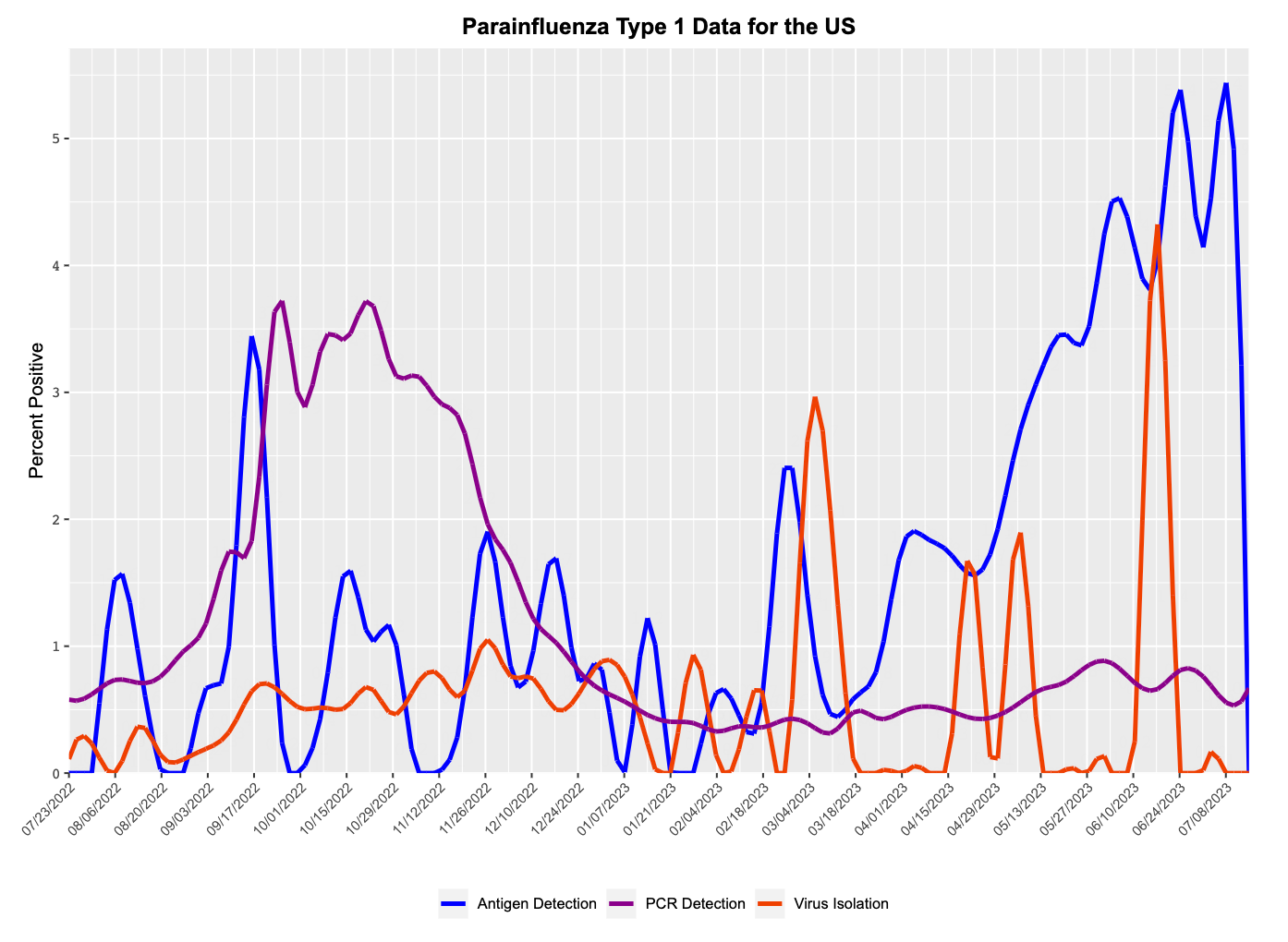Covid-19 activity continued to pick up again this week. In both the Northeast and Southern regions of the country, there was an increase in the concentration of SARS-CoV-2 in wastewater. For comparison, these levels are similar to what we saw in March and April.

Other indicators are beginning to tick up as well. Weekly emergency department visits for Covid-19 have risen slightly in the last two weeks. Hawaii, Florida, Guam, Alaska, and Louisiana all have more than 1% of ED visits diagnosed as Covid-19. Washington, Oregon, Iowa, Arizona, and Alabama aren’t far behind.
The vastness of the Western region may also be obscuring some localized hotspots. At the state level, Washington and Oregon have rising hospitalization admissions, and Nevada, Hawaii, California, and Arizona all have test positivity above 9%. Positivity is more difficult to interpret now than it used to be, but it does still tend to be a useful indicator of early trends.
I want to stress that overall Covid-19 activity is still low, thanks to months of steady declines. But we are starting to see some of that improvement erode, which may signal that there’s more ahead.
As an aside: This patchy situation report underscores how important epidemiological data is for understanding what’s happening in our communities. Many Covid-19 data streams were weakened by the end of the public health emergency declaration, and that has made it more difficult to get a real-time understanding of where the virus is circulating. The next Covid-19 wave will be the first since 2020 that we must face without detailed data.
What many people don’t realize is that most of our disease surveillance systems have poor resolution. Many of the data sources I check for this newsletter only provide national-level figures, and the data is usually limited to percent positivity. Here’s a typical example—not very interpretable.

I am all for strengthening our early warning systems for potential pandemic pathogens, but I think we ought to improve surveillance for bugs that routinely keep us out of work and school, too.
What else is going around: The other infectious diseases that I usually keep an eye on appear to be relatively quiet, save for rhinovirus and adenovirus. Rhinovirus causes cold-like symptoms. It's common in wintertime but can occur at any time of the year. Adenovirus is a bit more versatile. It can cause a wide variety of symptoms, ranging from cold or flu-like illness to gastrointestinal distress and even pink eye. There is also an increase in E. coli activity, which is a bacterial pathogen typically acquired from contaminated food or water that can lead to severe gastrointestinal illness.
There are no new food recalls of note.





I'm curious if you have any thoughts on timing if Covid vaccines ? Does it make sense to get that last booster if folks haven't yet or wait for a new vaccine in ... Aiugust? September? Thanks!
I live in Seattle (got my first Covid infection in early June in Vienna of all places--I masked but no one else did) but I am seeing a lot more Covid here amongst people I know. Some are reinfections and some are first infections. It hasn't gone away ...